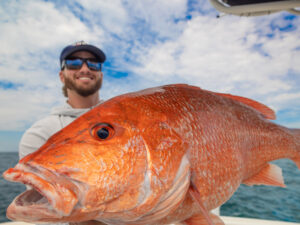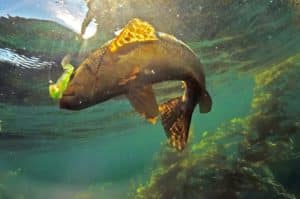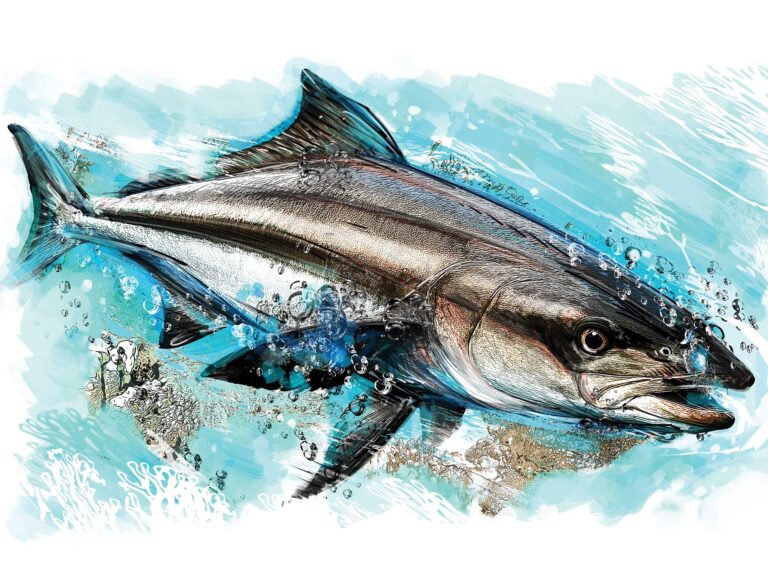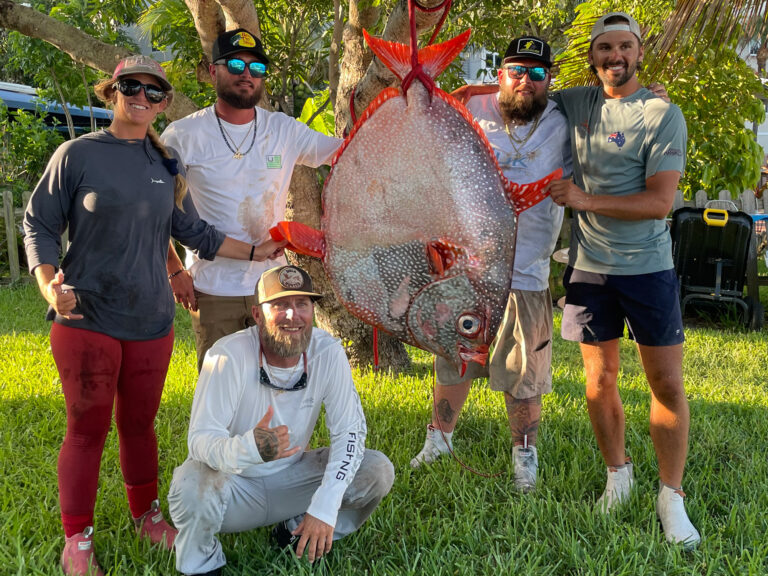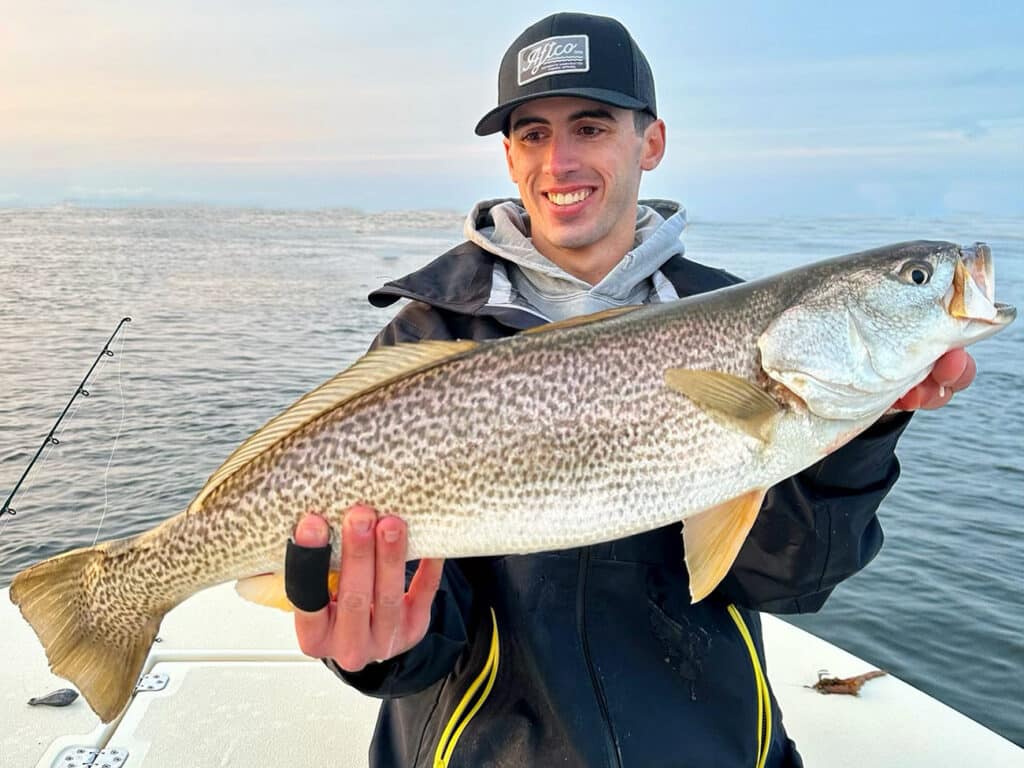
Weakfish are more than a contemporary enigma, they are a flat-out mystery. I’m not talking about how to catch them — we’re pretty good at that when they’re around. Nobody can seem to figure out their year-to-year patterns, frustrating scientists, biologists, tackle shops and anglers alike.
Weakfishing Used to be Dependable
For years, especially in the 1980s to early 2000s, weakfishing was legit. New Jersey- and New York-area anglers caught up to 50 fish on a tide. Most fish were from 1 to 4 pounds, but true “tiderunners” of 10-pounds plus could be found before sunup in the Northeast bay systems.
Delaware Bay was once considered the “Weakfish Capital of the World,” as that slogan is still written on salt-weathered wood plaques along the docks in Cape May, New Jersey. Historically April and early May brought tiderunners into the bay systems after the breeders spawned out. Then around 2006, they went ghost. Literally gone. Disappeared. Nobody was catching anything, save for a few unicorns.
Strangely, during wintertime each December, seabass party boats reported catching 5- to 10-pound weakfish 80 miles offshore on the canyon flats in 300 feet of water. What gives? Who knows. Nowadays, spikes of weakfish seem to show up every 5 years or so for a week or two and everybody gets excited. Then, they’re not to be found again.
Anglers are Hoping for a Weakfish Rebound
But this year could be the start of something interesting.
Jacob Krause, a research biologist for the United States Geological Survey (USGS), is one of the few scientists who’s researched weakfish via tagging studies (although his last assessment was from 2017). He surmises their population has a direct correlation with natural predation.
“Bottlenose dolphin are a main predator of small weakfish from 0 to 3 years old,” he said. “There was a die-off of the bottlenose dolphin in the 1980s and again in 2013 to 2015 due to a virus. We calculate [the virus] contributed to a near 50% die-off of the species.”
If anyone remembers the 80s and early 90s, weakfish were abundant in New Jersey waters. Could that have been related to the dolphin mortality?
Linda Barry, a research scientist with New Jersey Fish and Wildlife, concurs with the idea of natural mortality.
“It seems weakfish in the New Jersey area have been depleted since 2003, and with bag and size limits under severe restriction, their absence can most likely be attributed to natural predation from striped bass, bottlenose dolphin, bluefish and spiny dogfish — rather than overfishing practices,” said Barry.
Krause’s research has shown that juvenile weakfish don’t survive in great numbers to adulthood because of predation. “There’s a recruitment bottleneck somewhere,” he explained. “Weakfish can spawn as early as year 1 and 2. If those fish don’t make it to adulthood, stocks cannot be replenished quickly enough.”
So if bottlenose dolphin are a main factor in the survival rate of the weakfish stocks, will that die-off of dolphin from 2013 to 2015 equal a weakfish rebound this year and in the coming years?
Hot Start to New Jersey Weakfish Season
This past year in late May, I cast a black Bomber plug in the New Jersey surf, landing 30-pound striped bass after bass. Every once in awhile, I’d feel a few taps — tail slaps from bass, I thought. So I slowed my presentation down.
I got a bump again soon, and then I took it really slow during the fight. I ended up landing a giant tiderunner of 34 inches. It was the first serious weakfish I’d seen in the surf in 15 years. I proceeded to land six weakfish from 32 to 36 inches, all 10 to 14 pounds that night. The following nighttime outings were just as successful. My knees were knocking. This was something — unusual. I predicted they would be here this spring once again, and all signs point to yes.
Already in April and May, the New Jersey and New York areas have seen sporadic photos of catches of large fish, 6- to 12-pounders. It’s not hot and heavy, but every few days, some big weakfish are being reported in their old school haunts. This is all new and unfolding as this is being written.
- Raritan Bay’s Flynn’s Knoll is giving up tiderunners on old-school sand-worming tactics.
- Barnegat Bay anglers are hooking 10-pounders on ½-ounce bucktails, paired with bubblegum Lunker City Fin-S baits.
- Cape May jetty anglers are floating bloodworms to hook up.
Matt Broderick, of The Fisherman magazine, told me Peconic Bay in Long Island Sound has immense numbers of 1- to 4-pound-class fish. It begs the questions: Is this the start of a really good weakfish season? Will we see a consistent summertime fishery with spikes of 5-pounders this year in the bay systems?
Keep a keen eye out this year in the Northeast. My prediction is there will be a mild resurgence of the fishery through the summer. Will it last or are we destined to get our hopes up again? The good news is that most of the fish hooked this year are large breeding-population fish. In the past decade, we were welcomed with smaller fish mostly. But the presence of tiderunners around area waters could signal a shift in the fishery for the next few years. Stay tuned.

